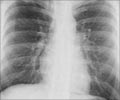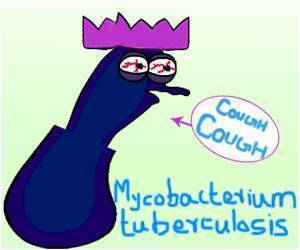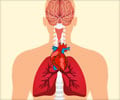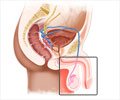Blood test helps to predict the risk of developing active infection among children infected with tuberculosis bacteria.
- Tuberculosis (TB) is often difficult to diagnose in children due to the shortage of effective screening methods.
- The study team found that the test, QuantiFERON-TB assay, which is commonly used in adults, could effectively predict the risk of developing the disease among children too.
- The test is a type of interferon-gamma release assay, which measures the amount of interferon gamma, a type of cell-signaling protein, released by certain immune system cells.
Trial
Jason Andrews and his colleagues analyzed medical data from a published trial done by the South African Tuberculosis Vaccine Initiative between 2009 and 2012.The trial was conducted in a rural area outside Cape Town, where about 30,000 TB cases are reported every year.
The trial involved 2,512 babies who were healthy and HIV-negative, with no known exposure to the disease.
Half of the babies in the trial received the experimental vaccine and the other half received a placebo.
The researchers in the trial used the QuantiFERON-TB test, also known as QFT, to measure infection in the children. They were tested at the start of the trial and at one year and two years.
The person is considered negative for the bacteria, if the response measures less than 0.35 international units per milliliter, and a result higher than that value is considered to be positive.
Test Results After One Year
When the 2,512 children in the study were tested at a year, 172 of them or 6.8%, were found to be positive carriers of the bacteria, a very high rate of infection.Of these, 30 children had already been diagnosed and treated for the active disease.
The research team more closely examined the remaining 142 children who tested positive but had not yet developed active TB.
They found that if children had test results values between 0.35 and 4.0 international units per milliliter, only 2.5% developed the active disease.
But among children with values greater than 4.0 international units per milliliter, around 28% developed active TB.
Only 0.7% of those with a negative test developed TB.
"We found that as your value goes up, your risk goes up, and the risk really begins to accelerate after a value of 4," Andrews said. "The children in the high-value group had a 40-fold higher risk of getting sick, which is a very powerful marker."
Conclusion
In high-risk countries like South Africa, where many young children die of the disease every year and where screening tests for TB in children are ineffective, this test could be useful."It could be highly valuable in determining which kids will develop TB disease," said Andrews, an assistant professor of medicine who is the lead author of the study.
"Given the high rates of TB and the difficulty of diagnosing it in kids, this can be something that could be done routinely in kids to identify the high-risk ones," he said. "You could imagine in a high-burden country that at a child's 12-month visit, they could also get a QuantiFERON test and, if it's high, they'd get aggressively investigated for TB."
The World Health Organization(WHO) does not currently recommend use of this test in children, but the research team hope that these new findings will prompt changes in their decision.
"What we are hoping is that this will show the international community -- the WHO, CDC and those creating guidelines -- that QuantiFERON testing can be reliable in kids, and that the quantitative values may be important so we may need to look a different thresholds than we use in adolescents or adults," Andrews said.
The only drawback of the test is the high cost and the requirement of well-equipped laboratory and trained personnel to perform. Though the test maybe viable in a country like South Africa, it may not be of much use in poorer countries.
"These new findings confirm that the IGRA test for tuberculosis infection performs differently in young children compared with adults," said Mark Hatherill, MD, senior author of the study and senior clinical researcher at the South African Tuberculosis Vaccine Initiative. "More importantly, we now know that the IGRA test can be used to identify those children who are at highest risk of developing tuberculosis disease and who would benefit most from investigation and therapy."
The study is published online in the Lancet Respiratory Medicine.
Tuberculosis
TB is a potentially fatal lung disease caused by Mycobacterium tuberculosis. It is an airborne disease and is readily transmitted through droplets by coughing.According to the WHO, in 2015, TB caused 1.8 million deaths worldwide and is one of the top 10 killers around the globe.
According to infectious disease specialist Jason Andrews, MD, who has been studying the disease there for a decade, TB is the leading cause of death among adults and children in South Africa, accounting for some 8.5% of the nation's fatalities.
Adults are commonly screened using sputum testing, and this method does not work in children, as they typically swallow their sputum after coughing.
Children can become infected not only through parents but also through contact with other infected individuals on buses, in churches, schools or other public places.
There is no effective screening tool for children, who are especially vulnerable to TB and who often show up in clinics at a later stage of the disease, when it is more difficult to treat. Around 20% of the children are infected by the bacteria developing the active disease.
References:
- Introduction to TB – What is TB?, Latent TB & TB disease, symptoms, diagnosis & treatment - (http://www.tbfacts.org/tb/)
- Tuberculosis/ Pulmonary Tuberculosis/ Lung Tuberculosis/ TB - (https://www.medindia.net/patients/patientinfo/tuberculosis.htm)
- Jason Andrews et al. Lancet Respiratory Medicine; (2017)
















